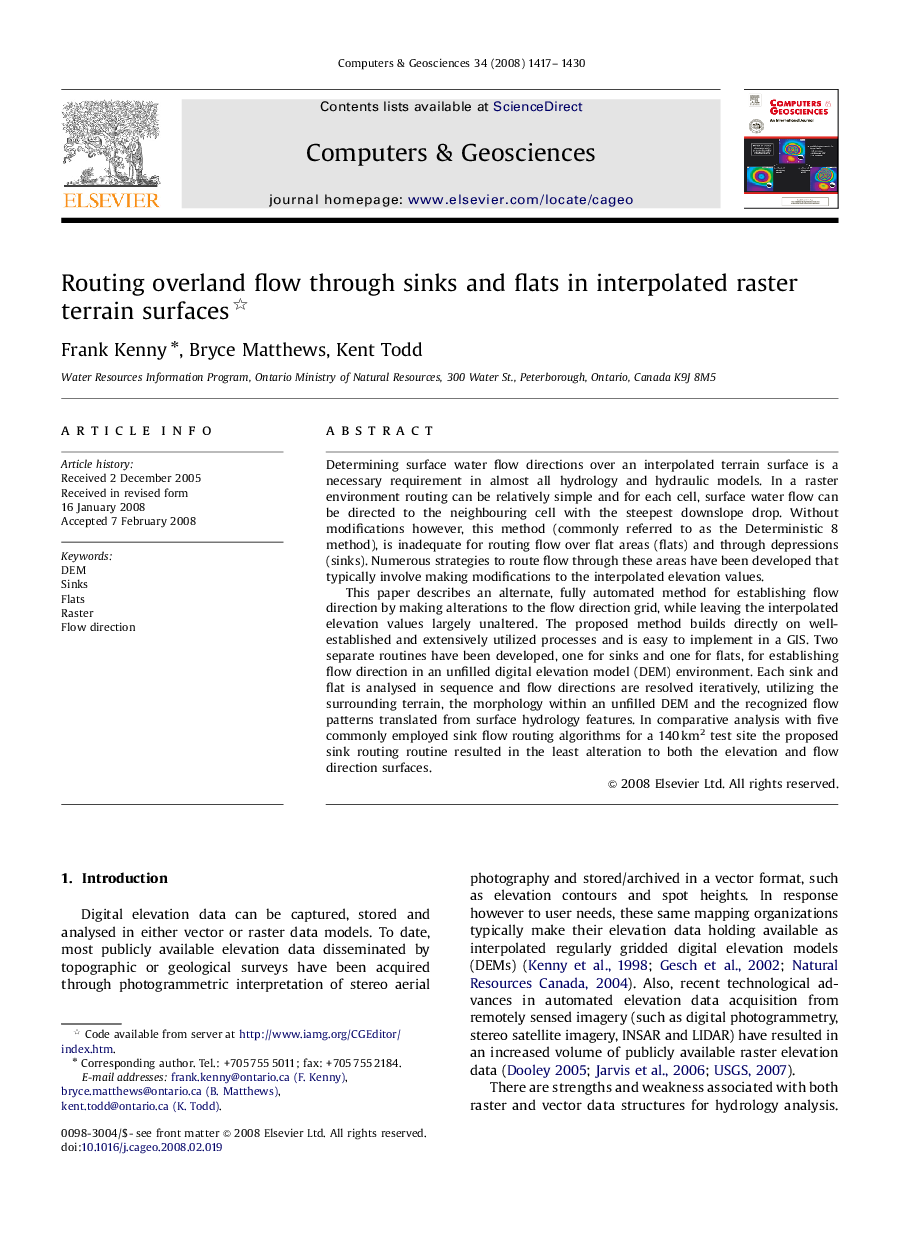| Article ID | Journal | Published Year | Pages | File Type |
|---|---|---|---|---|
| 508057 | Computers & Geosciences | 2008 | 14 Pages |
Determining surface water flow directions over an interpolated terrain surface is a necessary requirement in almost all hydrology and hydraulic models. In a raster environment routing can be relatively simple and for each cell, surface water flow can be directed to the neighbouring cell with the steepest downslope drop. Without modifications however, this method (commonly referred to as the Deterministic 8 method), is inadequate for routing flow over flat areas (flats) and through depressions (sinks). Numerous strategies to route flow through these areas have been developed that typically involve making modifications to the interpolated elevation values.This paper describes an alternate, fully automated method for establishing flow direction by making alterations to the flow direction grid, while leaving the interpolated elevation values largely unaltered. The proposed method builds directly on well-established and extensively utilized processes and is easy to implement in a GIS. Two separate routines have been developed, one for sinks and one for flats, for establishing flow direction in an unfilled digital elevation model (DEM) environment. Each sink and flat is analysed in sequence and flow directions are resolved iteratively, utilizing the surrounding terrain, the morphology within an unfilled DEM and the recognized flow patterns translated from surface hydrology features. In comparative analysis with five commonly employed sink flow routing algorithms for a 140 km2 test site the proposed sink routing routine resulted in the least alteration to both the elevation and flow direction surfaces.
